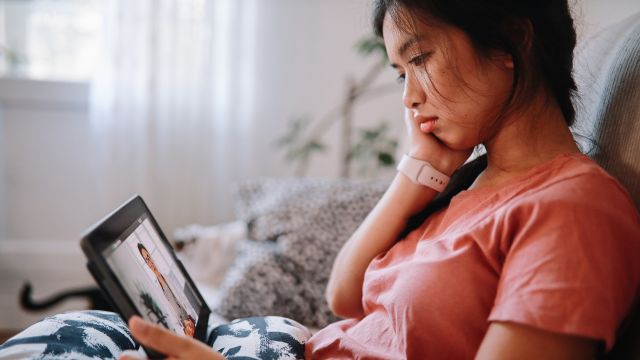Updated on January 22, 2024.
Keeping up with appointments is essential to managing migraines. But sometimes, getting to a healthcare provider’s office isn’t possible. If this is the case, you may want to consider a telehealth appointment.
A telehealth appointment is essentially a "virtual visit" with a healthcare provider using a smartphone, tablet, or computer. During the pandemic, many people utilized telehealth to continue seeing healthcare providers when office visits were not advisable.
Before booking a telehealth appointment, check with your insurance provider to see if the appointment is covered. Then, try the following strategies, which can help you have a successful appointment.
Documenting your migraines
Just as you would for an in-office appointment, you’ll want to prepare questions and updates beforehand, and have this list ready during your telehealth appointment. This will help you make the most of your visit, helping you get what you want from the time you spend with your healthcare provider.
When you experience a migraine, you should record the details of your headache in a diary, including:
- What time of day the attack began
- How long it lasted
- How debilitating it was (on a scale of 1 to 10)
- Whether it interfered with daily activities
You may also track your sleep schedule, what you’ve been eating and drinking, and any stressful situations.
This information can help you and your healthcare provider identify potential migraine triggers and patterns in your symptoms. It’s helpful to have this information ready to share during your appointment. Your provider may also ask you to share some of this information prior to the appointment.
Setting up your space
You’ll want to find a space in your home with limited distractions, where you will be able to focus. Additionally, you will want to make sure all of your technology is set up and ready to go. Here is what you will need for a typical telehealth appointment:
- A smartphone, laptop, or tablet with a camera and microphone. First things first, you will need a device that allows you and your healthcare provider to see and hear each other. Most modern devices come with built-in cameras and microphones, but if your device doesn’t have these, you can supplement with an external camera and microphone. Whatever device you are using, make sure it is fully charged and ideally, connected to a power source.
- A reliable internet connection. Appointment time is valuable and you want to spend it discussing your symptoms and treatment. You do not want to spend appointment time reconnecting to a wireless network, restarting a device, or searching for a stronger signal. If possible, use a wired internet connection where the device is plugged directly into the router.
- Headset or headphones. This setup can help drown out any background noise that could be distracting to you or your healthcare provider. It can also help keep the conversation private if there is anyone else around.
- A way to take notes. If you want to take notes during your appointment, set up your device on a table or desk where you’ll be able to keep your hands free. You may also consider getting a stand for your phone or tablet.
After your appointment
Telehealth may not be right for every person or every appointment, and it may feel different at first. But it can have its benefits, especially during times when you are unable to get to your healthcare provider’s office. It’s important that you feel you are able to get what you need from the appointment, and that your healthcare provider feels they are able to provide adequate care with telehealth. After your appointment, take some time to think about what you need going forward, and if possible, discuss this with your healthcare provider.







